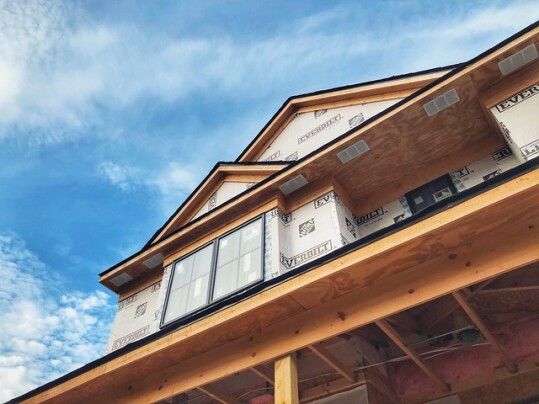Sales of previously owned homes fell 5.9 percent in July, according to new numbers from the National Association of Realtors. The decline continues a downward trend that began earlier this year, when mortgage rates increased after years of hovering just above, or at, record lows. Lawrence Yun, NAR’s chief economist, says sales have fallen but that doesn’t necessarily mean prices have. “We’re witnessing a housing recession in terms of declining home sales and home building,” Yun said. “However, it’s not a recession in home prices. Inventory remains tight and prices continue to rise nationally with nearly 40 percent of homes still commanding the full list price.” Tight inventory also means prospective home buyers still need to be ready to act fast when they find a home that fits their needs. The NAR says the typical property was on the market just 14 days in July, with 82 percent of homes selling in less than a month. (source)
Archive for August 2022
Existing Home Sales Fall In July
Buyers Say They Had To Compromise On Wish List
Buying a house means setting priorities. More than likely, you won’t find one that checks off every single item on your wish list. So you’re going to have to prioritize and choose which features are most important to you and which you can live without. You’re also going to have to compromise. According to one recent survey, most home buyers do. In fact, the survey found 80 percent of recent home buyers said they had to compromise on their priorities. That means giving up something that made their wish list and buying a house that had most, but not all, of their desired features. For example, among survey respondents who compromised, 20 percent said they settled on neighborhood and bought in an area that wasn’t their top choice. But despite the vast majority of recent buyers saying they made compromises, their top regrets weren’t about features they had to do without. In fact, recent buyers said their biggest regrets were spending too much and buying too quickly, both common problems during last year’s frenzied market. (source)
Mortgage Rates Down Significantly Since June
According to the Mortgage Bankers Association’s Weekly Applications Survey, average mortgage rates for 30-year fixed-rate mortgages with conforming loan balances fell last week from the week before. The drop came during a week where rates for FHA, jumbo loans, and 15-year fixed-rate loans all saw slight increases. Overall, though, rates were relatively calm. They’re also down significantly from their peak in June. Joel Kan, MBA’s associate vice president of economic and industry forecasting, says further declines could bring hesitant home buyers back to the market. “If home price growth slows more significantly and mortgage rates move lower, we might see some purchase activity return later in the year,” Kan said. For now, purchase activity remains depressed. Last week, it fell 1 percent from the week before and was 18 percent lower than last year at the same time. The MBA’s weekly survey has been conducted weekly since 1990 and covers 75 percent of all retail residential mortgage applications. (source)
Housing Starts Slow As Completions Rise
The U.S. Census Bureau and the Department of Housing and Urban Development’s monthly New Residential Construction report tracks the number of new homes that began construction during the month, the number of homes that were finished, and how many building permits were authorized. In July, the report found the number of housing starts down significantly from the month before. In fact, the number of new homes that began construction In July fell 9.6 percent. But while some of that decline is due to slower demand from home buyers, a closer look at the housing completions numbers tells the other half of the story. Put simply, home builders have a lot of homes in the pipeline. Backed up by labor shortages and supply issues, builders are playing catch up right now. That’s why, despite falling housing starts, completions actually rose in July. Housing completions were up 1.1 percent from the month before and 3.5 percent higher than last year at the same time. That means, at least part of July’s slowdown was caused by home builders finishing the homes that had already begun construction. (source)
Home Builders Cut Prices On New Homes
New homes are generally more expensive than previously owned homes. That’s not surprising. Anything brand new typically costs more than something used. But if you’re a prospective home buyer who’s been reluctant to consider buying a new house because of the price tag, the latest Housing Market Index from the National Association of Home Builders has good news for you. The index – which is based on a monthly survey of home builders – found one in five say they’ve reduced their prices in the past month. Of course, the reason they’ve cut their prices is because affordability conditions have gotten more challenging this year. Elevated prices and rising mortgage rates reduced the number of buyers active in the market. However, for buyers who’ve remained active, price cuts could be an opportunity. Robert Dietz, NAHB’s chief economist, says buyers may see more stability in the months ahead. “As signs grow that the rate of inflation is near peaking, long-term interest rates have stabilized, which will provide some stability for the demand-side of the market in the coming months,” Dietz says. (source)
Is Relief Ahead For Home Buyers?
A new quarterly report from the National Association of Realtors found the median home price reached a new record high during the second quarter. By the end of June, it was up to $413,500. That’s after the vast majority of metro areas saw double-digit price gains from the year before. Put simply, it got more expensive to buy a home this spring. But though buying got more costly during the first half of the year, could the second half of the year bring buyers some relief? Maybe, according to Lawrence Yun, NAR’s chief economist. Yun says buyers may begin to see affordability conditions improve soon, as the market finds better balance. In fact, prices and rates have both gotten more favorable in recent days. “Overall, the national price deceleration inevitably followed the softening sales, providing well-positioned buyers a small measure of welcomed relief,” Yun said. “The recent dips in mortgage rates will bring additional buyers to the market, especially in those places where home prices are still relatively affordable and where jobs are being added.” In other words, home price increases have already begun to slow and, with mortgage rates down from where they were earlier this year, home buyers may begin to see a little relief, after a challenging first half of the year. (source)
Credit Availability Tightens In July
Before you can buy a house, you need to secure financing. That means getting a mortgage. But the standards used to determine whether or not – or how much – a potential buyer is approved to borrow aren’t fixed. There are times when the mortgage approval process is more difficult and times when it’s easier. Because of this, the Mortgage Bankers Association keeps a monthly measure of whether lending standards are loosening or tightening. Any increase in their Mortgage Credit Availability Index means standards are loosening and it’s getting easier for prospective borrowers. A decrease indicates standards have tightened. In July, credit availability tightened. Joel Kan, MBA’s associate vice president of economic and industry forecasting, says the decline was due to slowing demand. “The 9 percent decline in the July index was the largest monthly decrease since April 2020,” Kan said. “Lenders have responded accordingly to the decrease in demand for refinance and purchase loans by reducing loan offerings, including for ARMs, cash-out refinances, and investment properties.” (source)







